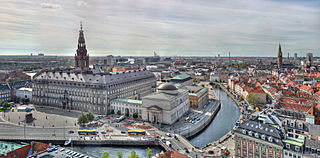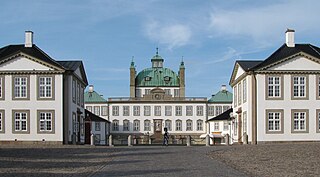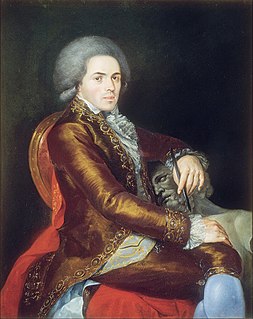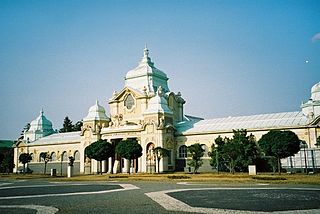

The Lapidarium of Kings (Kongernes Lapidarium) is a lapidarium in Copenhagen, Denmark. It exhibits a royal collection of sculptures, natural stone figures and plaster models.

A lapidarium is a place where stone monuments and fragments of archaeological interest are exhibited.

Copenhagen is the capital and most populous city of Denmark. As of July 2018, the city has a population of 777,218. It forms the core of the wider urban area of Copenhagen and the Copenhagen metropolitan area. Copenhagen is situated on the eastern coast of the island of Zealand; another small portion of the city is located on Amager, and it is separated from Malmö, Sweden, by the strait of Øresund. The Øresund Bridge connects the two cities by rail and road.

Denmark, officially the Kingdom of Denmark, is a Nordic country. Denmark proper, which is the southernmost of the Scandinavian countries, consists of a peninsula, Jutland, and an archipelago of 443 named islands, with the largest being Zealand, Funen and the North Jutlandic Island. The islands are characterised by flat, arable land and sandy coasts, low elevation and a temperate climate. The southernmost of the Scandinavian nations, Denmark lies southwest of Sweden and south of Norway, and is bordered to the south by Germany. The Kingdom of Denmark also includes two autonomous territories in the North Atlantic Ocean: the Faroe Islands and Greenland. Denmark has a total area of 42,924 km2 (16,573 sq mi), land area of 42,394 km2 (16,368 sq mi), and the total area including Greenland and the Faroe Islands is 2,210,579 km2 (853,509 sq mi), and a population of 5.8 million.
The museum is situated in the 400 year old brewhouse of King Christian IV. During the years leading up to 2013, the Board of the Palace and Culture Agency (Styrelsen for Slotte & Kulturejendomme), with the support of TrygFonden, implemented a fire protection of the 8,000-storey square meter brew house, to enable the building to be opened to the public. Lapidarium was officially opened on June 3, 2014. [1] [2]

Christian IV's Brewhouse is a building in Copenhagen, Denmark, dating from 1608. In spite of the name under which it is known today, the building was not originally built for the purpose of brewing beer. It is located on Slotsholmen by the harbourfront and was constructed for military purposes as a corner bastion, part of Christian IV's fortification of the city.
The collection consists of 300 statues, sculptures and ornamentation in different materials gathered from royal gardens, palaces and buildings. Among the treasures are a model of the equestrian statue of King Frederick V at Amalienborg, and the original equestrian statue of Christian V at Kongens Nytorv. [3] [4]
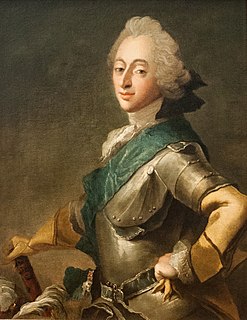
Frederick V was king of Denmark–Norway and Duke of Schleswig-Holstein from 1746 until his death. He was the son of Christian VI of Denmark and Sophie Magdalene of Brandenburg-Kulmbach.

Amalienborg is the home of the Danish royal family, and is located in Copenhagen, Denmark. It consists of four identical classical palace façades with rococo interiors around an octagonal courtyard ; in the centre of the square is a monumental equestrian statue of Amalienborg's founder, King Frederick V.

Kongens Nytorv is a public square in Copenhagen, Denmark, centrally located at the end of the pedestrian street Strøget. The largest square of the city, it was laid out by Christian V in 1670 in connection with a major extension of the fortified city, and has an equestrian statue of him at its centre. The initiative moved the centre of the city from the medieval area around Gammeltorv, at that time a muddy medieval marketplace, to a cobbled new square with a garden complex, inspired by the Royal city planning seen in Paris from the early 17th century.





